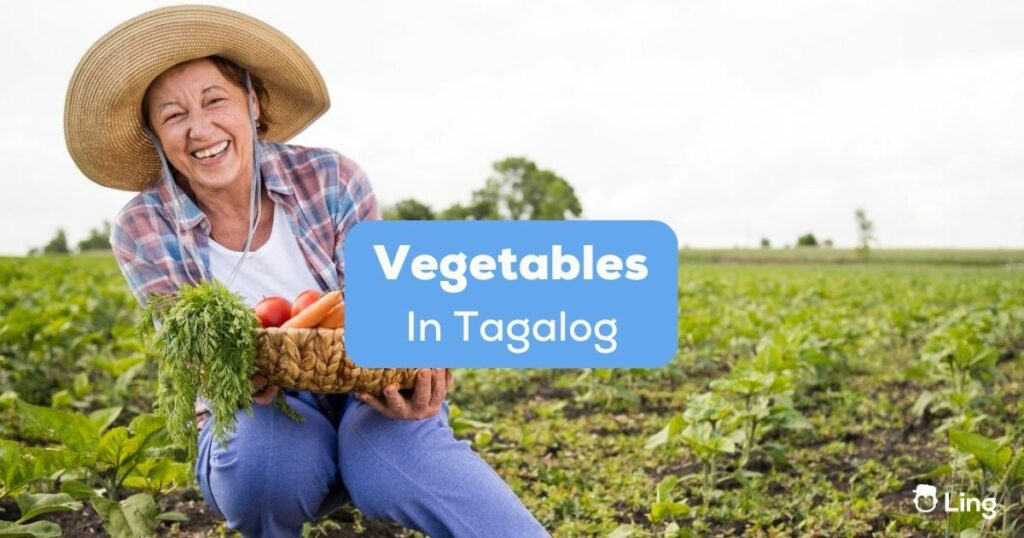Aside from all the pristine beaches that you can only find in the Philippines, there are sumptuous traditional Filipino foods that you must try out! Express yourself better and memorize the names of these vegetables in Tagalog today in this post.
So today, we’re going to learn about vegetable names in Tagalog. You’ll find out what different veggies are called in the Philippines. This will be fun and useful, especially if you like Filipino food or just want to learn more about the Tagalog language.
Bahay Kubo Names Of Vegetables In Tagalog
In the Philippines, the Tagalog word for vegetable is gulay, and the Filipino people are always using it in most of their local Filipino dishes as it is always available and can be grown right in your backyard for free! In fact, the popular nursery rhyme called Bahay Kubo reflects the traditional provincial living for most Filipinos.
From this Filipino folk song, you’ll learn that most families live in a small nipa hut, and they survive by planting and harvesting fruits and veggies right outside their homes. Here are the most common vegetables grown in the backyard and the dishes they are part of:
The Bahay Kubo song is like a small picture of life in the provinces of the Philippines. It shows how people there love to grow lots of vegetables near their homes. Next, we’re going to look at more vegetables in Tagalog that are common in the Philippines.

Other Names Of Vegetables In Filipino Language
Of course, there are still a lot of vegetables available in the Philippines. And hey, if you want to learn more Tagalog vocabulary, why not try the Ling app? It’s available on Google Play and the App Store. Now, let’s go back to the list of some more veggies that are usually used for top Filipino dishes.
Philippines’ Provincial Garden Vegetables
If you visit Manila, you will see advanced city life, but if you take a stroll on the province side… the whole landscape literally changes! From the province, you can see white sand beaches and traditional houses to the point that you will wonder if you are in a whole new dimension. From private cars or public vehicles in the city, you will instantly be greeted by traditional modes of transportation like motorized tricycles, Carabao riding, and the common balsa (a raft made of logs)!
Additionally, houses in the province are much bigger and are traditional by nature. Most houses usually have two floors, wherein the first story is called a silong or a buffer area for sudden floods and to prevent farm animals from getting up the living area. You can also find that most houses have their own backyard gardens where they follow a farm-to-table living. These gardens are not just for Philippine flowers but for vegetables and fruits like the following:
Which Among These Vegetables Are Your Favorites?
Please note that there are still tons of vegetables in the Philippines, but what we have listed in this article are the most commonly used Filipino ingredients. With knowledge of this, we bet that you can hit the streets and buy any of these like a total pro!
As I conclude this article, I hope I was able to enlighten you with the most useful English translations as well as the dishes in which you will encounter the aforementioned vegetables in Tagalog. If you liked this post, please share it on social media so that we can reach out to language enthusiasts and Tagalog learners from across the world who might be interested in learning further.
Updated by: Jefbeck






























































